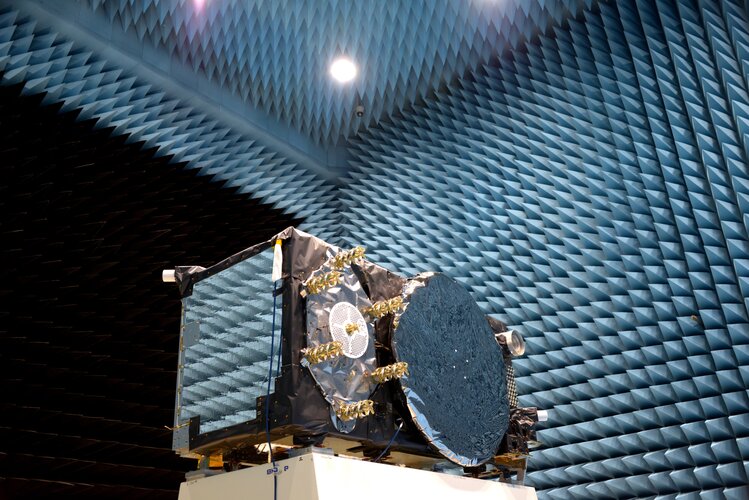
5. Clocks on the shady side: Meanwhile the base of the satellite – covered with reflective panels – is intended to be always kept out of sunlight and in shadow. On the inside of this panel is where Galileo’s four clocks are mounted. The aim to keep their operating temperatures stable to within 0.5 °C, to a maximum 20°C, when the difference between the sunny and shaded side of the satellite surface is more than 200°C. The latest ‘Batch 3’ Galileo atomic clocks are protected with an additional radiation shielding on the satellite to further boost their stability.
6. Timekeeping to a few billionths of a second: Twin ‘passive hydrogen maser’ atomic clocks are the master clocks onboard, using the ultra-stable oscillations of a hydrogen atom to measure time to an accuracy of one second in three billion years. Two smaller rubidium clocks provide an independent time source, accurate to three seconds in one billion years. In practice an ensemble of atomic clocks on the ground keep these orbital clocks synched to ‘Galileo System Time’, accurate to a few billionths of a second, via timing corrections included in the navigation messages sent up to satellites by Galileo’s worldwide ground segment.



